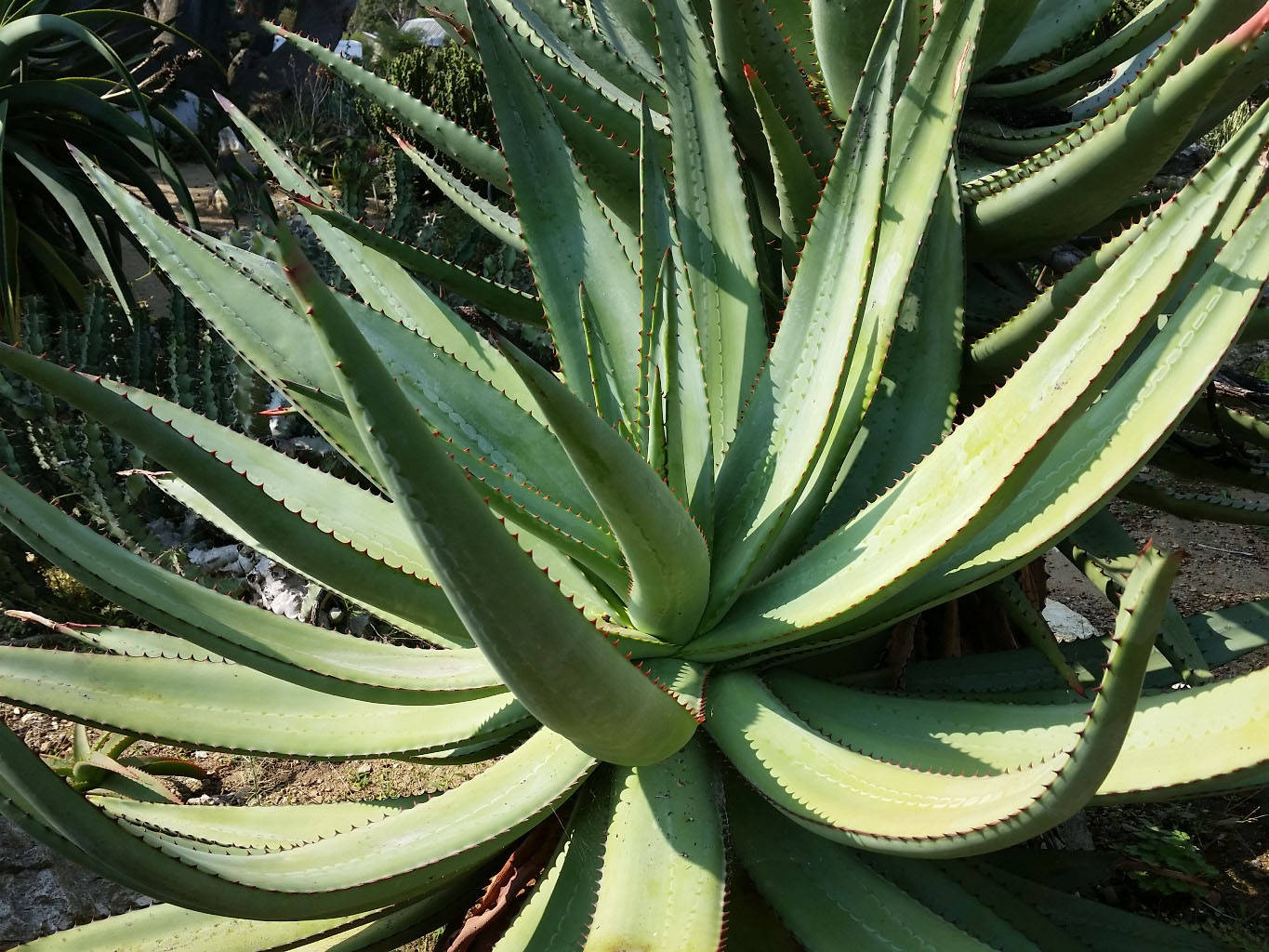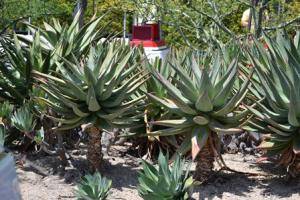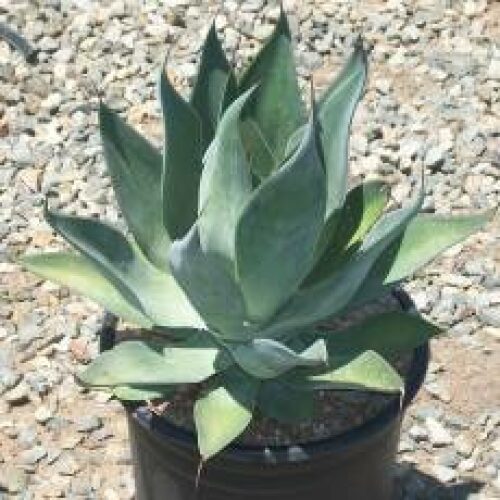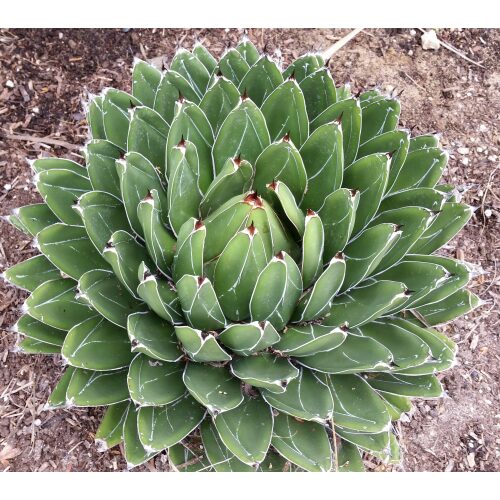Aloe ferox
Cape Aloe
| Evergreen-Deciduous | Evergreen |
|---|---|
| Overall Mature Size | Medium |
| Mature Height & Spread | 6-8' x 3-5' |
| Exposure | Full sun |
| Water | Low water |
| Flower Color | Orange-Red |
| Bloom Time | Fall, Winter |
| Special Features | Attracts Birds, Butterflies, Coastal Conditions, Deer Resistant, Low Water Use |
| Container Sizes | #1, #5, #15 |
| Natural Growth Habit | Upright |
| Minimum USDA Hardiness Zone | 8-11 |
| Sunset Garden Zones | 8, 9, 12-24 |
| Plant Type | Succulent |
The bitter aloe will reach up to 8 feet in height with the leaves arranged in a rosette. The old leaves remain after they have dried forming a petticoat” on the stem. The leaves are a dull green sometimes with a slightly blue look to them. They may also have a reddish tinge. The “”A. candelabrum form”” has an elegant shape with the leaf tips curving slightly downwards. The spines along the leaf edge are reddish in color. Spines may also be present on upper and lower surfaces of the leaves as well. Young plants tend to be very spiny. The flowers are carried in a large candelabra-like flower-head. There are usually between five and eight branches each carrying a spike-like head of many flowers. Flower color varies from yellowy-orange to bright red. “”A. candelabrum”” has six to twelve branches and the flowers have their inner petals tipped with white. Flowering occurs between May and August but in colder parts of the country this may be delayed until September. This aloe forms a beautiful display and attracts many bird species Insects also visit the flowers which in turn brings yet more birds to your garden. It is an excellent garden specimen plant and is adaptable to many conditions.





